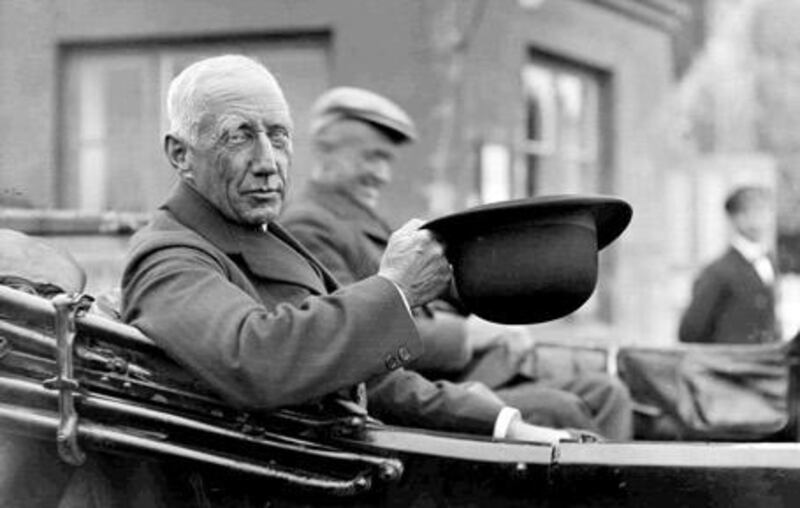LONDON // An underwater search will begin later this month for the wreck of the plane in which Roald Amundsen, the legendary polar explorer, lost his life. The French-built Latham seaplane crashed into the Arctic Ocean in 1928 as Amundsen ? the first man to reach the South Pole and the first known person to traverse the Northwest Passage ? joined an international search for another missing polar explorer. Two ships and a newly modified, unmanned submarine, the Hugin 1000, will be used to scan 114 square kilometres of seabed in the search for the plane.
"If there is something down there, we will find it," said Commander Frode Loeseth of the Royal Norwegian Navy. "The Hugin is a state-of-the art submarine and can search for 18 hours a day. "We want to find the plane and help solve the mystery. This will be conducted as a military operation." All previous attempts to find the plane ? the last, five years ago ? have failed, but searchers believe that the advanced sonar technology available on the Hugin now offers a good chance of success.
How much remains of the plane, which is believed to have gone down north-west of Bear Island in the Svalbard archipelago, is doubtful, however. The Latham 47 was built primarily of wood on a steel frame. One float and part of a wing was recovered shortly after the crash 81 years ago and the search team now hopes that major components, such as the engines, might still be visible on the ocean floor, with other parts of the aircraft preserved in the silt below.
Amundsen was 55 when, on June 18, 1928, he boarded the seaplane at Tromsø to join an international search for Umberto Nobile, an Italian explorer whose airship had crashed in the Arctic Circle during a storm. In the event, Nobile was rescued by the crew of a Swedish seaplane. Neither Amundsen's body nor those of the five other people aboard the French plane were ever recovered. Nobody is certain where or why Amundsen's plane crashed. "It is one of the remaining unsolved mysteries in our time," the Royal Norwegian Navy said in a statement.
The latest search, which has the backing of Amundsen's family, is being organised by the Norwegian Aviation Museum, a German TV company, the Norwegian maritime technology company Maritime Kongsberg and the navy. One of the navy ships being used in the search is the minesweeper Tyr, which has already led successful searches for several vessels, including the German World War II light battleship Scharnhorst in 2000 and the British destroyer HMS Hunter in 2008.
The Hugin submersible is operated from the Tyr and will concentrate during the search for Amundsen's plane on an area of seabed in the Barents Sea about 400 metres deep. "On Hugin, there is a sonar device with resolution of five centimetres," Bjørn Jalving, who designed the robot for Maritime Kongsberg, told Der Spiegel magazine. "If the aeroplane is lying somewhere in the area that we will be exploring, we will find it."
dsapsted@thenational.ae






